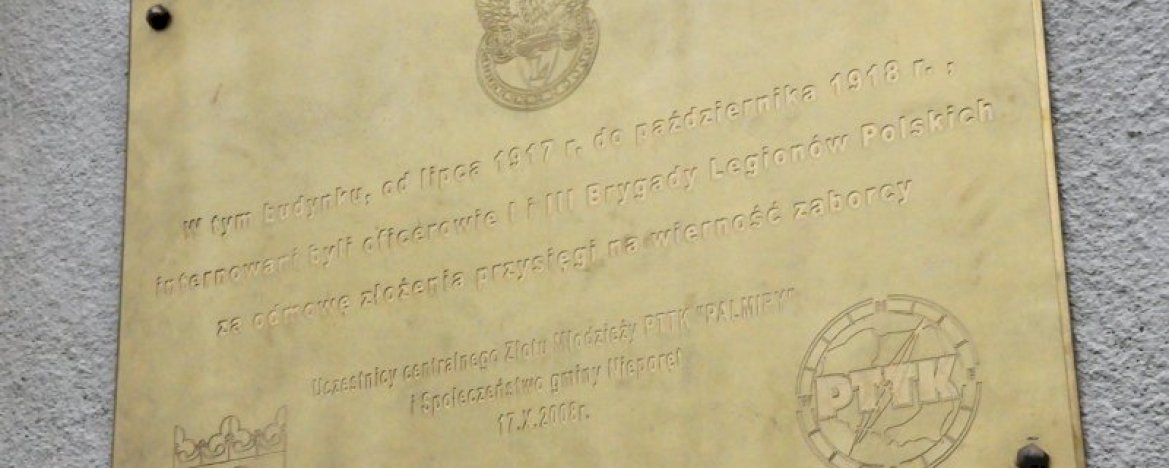
22. Plaque commemorating the internment of the Polish Legions officers in Białobrzegi
Six brick buildings in the barracks in Beniaminów
(now Białobrzegi) were destined for
the accommodation of the Polish Legions
officers interned in the summer of 1917 after
the Oath Crisis. The current access to
the estate in Białobrzegi overlaps with the
main road and gate leading to the internment
camp for the Polish Legions officers.
The camp was not originally fenced. Later,
the area was surrounded by a fence over 2
m in height made of barbed wire suspended
on wooden stilts. The camp was guarded
by the German guard sub-unit consisting of
one officer, one non-commissioned officer
and 20 guards on duty at four stations (one
at the gate and 3 at the fence).
The buildings in which the Polish officers were interned, after World War II were extended upwards and plastered, but they still bear many of the characteristics of the Tsarist garrison buildings. They can be distinguished by the continuous footing made of granite blocks, semi-circular lintels above the window openings and corner rustication. In the building No. 13, on which a commemorative plaque was suspended, the German command of the camp was located. Here were the offices of the commanders, of captain Cleinow and second lieutenant Ebner, among others. In the adjacent building, now under the No. 17, the famous editorial of the “Beniaminów Bulletin” was located, periodical edited by the detained legionnaire, second lieutenant Roman Starzyński, Chief Executive of the Polish Radio in the 30s of the 20th century. In the building currently occupied by the Kindergarten No. 32, from 22 July 1917 until 27 March 1918, the captain and doctor Felicjan Sławoj Składkowski was interned, who later became Divisional General and the Prime Minister of the Republic of Poland in the years 1936-1939.
The buildings in which the Polish officers were interned, after World War II were extended upwards and plastered, but they still bear many of the characteristics of the Tsarist garrison buildings. They can be distinguished by the continuous footing made of granite blocks, semi-circular lintels above the window openings and corner rustication. In the building No. 13, on which a commemorative plaque was suspended, the German command of the camp was located. Here were the offices of the commanders, of captain Cleinow and second lieutenant Ebner, among others. In the adjacent building, now under the No. 17, the famous editorial of the “Beniaminów Bulletin” was located, periodical edited by the detained legionnaire, second lieutenant Roman Starzyński, Chief Executive of the Polish Radio in the 30s of the 20th century. In the building currently occupied by the Kindergarten No. 32, from 22 July 1917 until 27 March 1918, the captain and doctor Felicjan Sławoj Składkowski was interned, who later became Divisional General and the Prime Minister of the Republic of Poland in the years 1936-1939.
